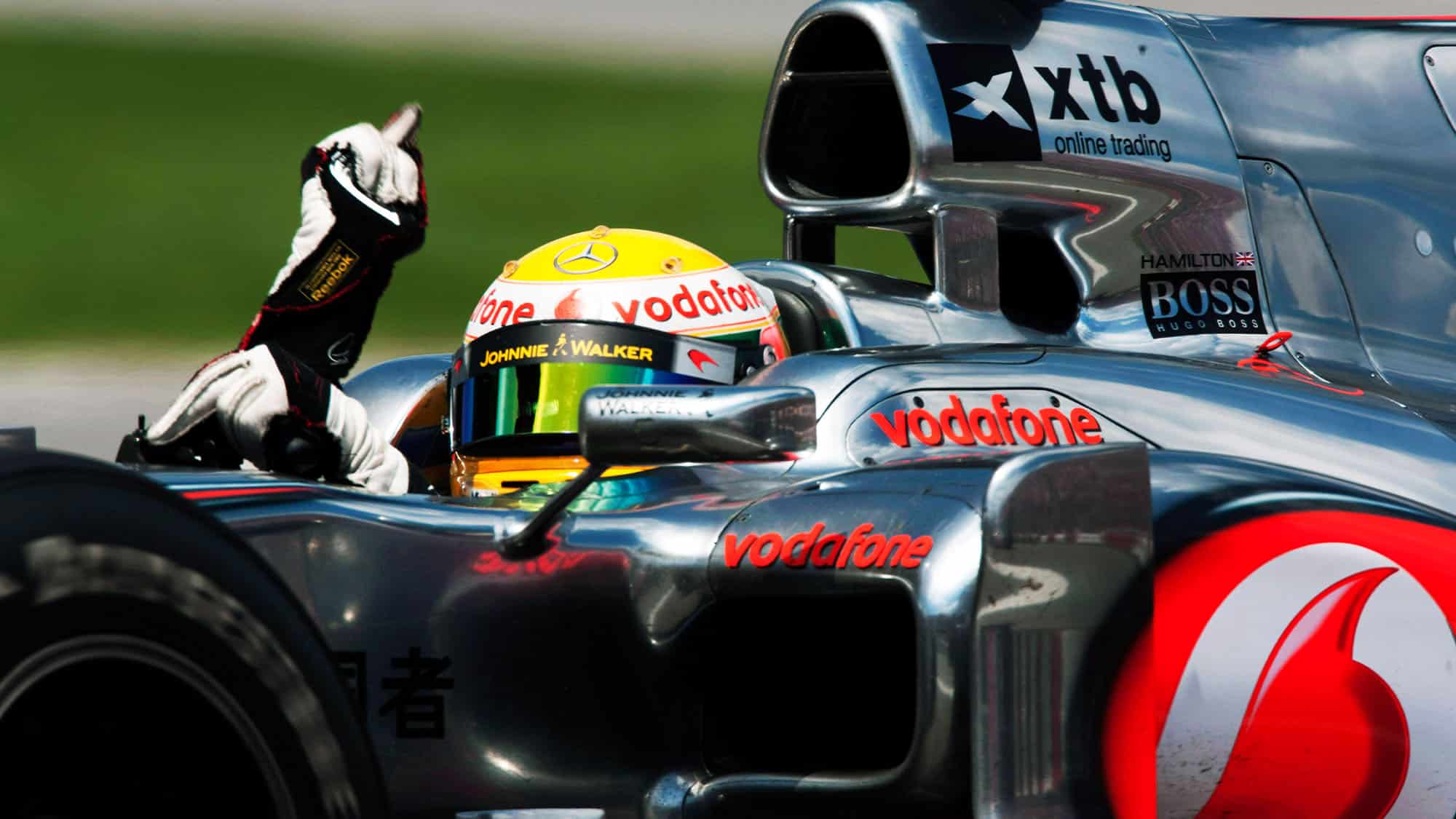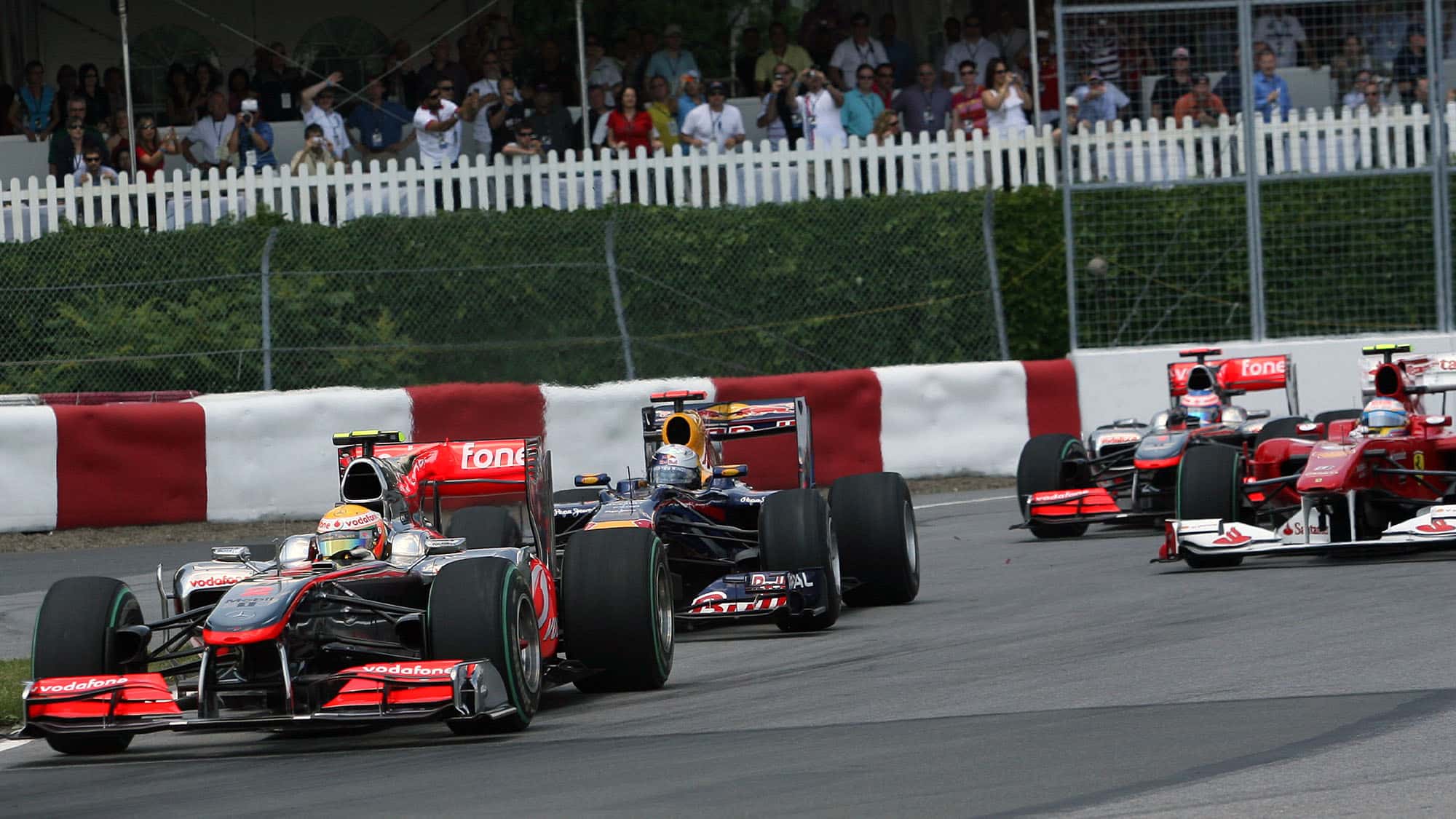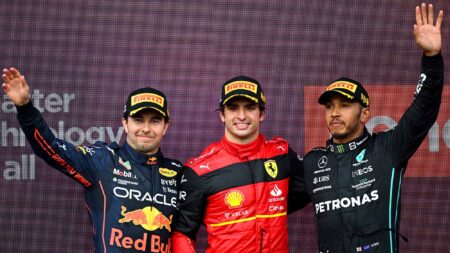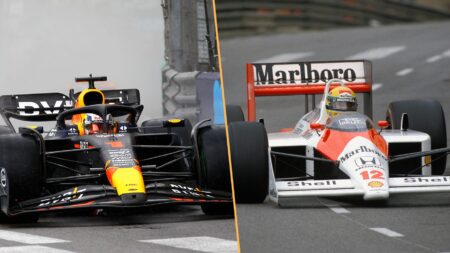So what happened in that 2010 race which got everyone so enthused? There was nothing planned about it, but neither of the Bridgestone compounds – the medium and super-soft – worked. The drama with the track surface breaking up in the traction zones in the previous two Montreal races had led the organisers to patch those parts up with a very light, non-abrasive surface to stop the tractive forces of the cars from just churning the track up. That and the cold weather induced massive graining – on either compound – which wore away the tread in no time at all. The track just refused to rubber-in. The tyres and the track surface were barely on speaking terms let alone getting intimate.
Red Bull had made the conservative tyre choice of medium for both Sebastian Vettel and Mark Webber (you had to start on the compound on which you’d set your grid time). The rest of the top 10 were on the super-softs, which were 0.3-0.4sec faster over a single lap but which fell off a cliff face of graining-induced wear after about four laps. Red Bull’s choice had helped McLaren’s Lewis Hamilton to score the first non-Red Bull pole of the season, with Vettel alongside him on the front row (but only after second-fastest Webber had taken a gearbox change penalty). The mediums lasted slightly longer than the super-soft – but not by all that much.
Hamilton surged into the lead from Vettel, knowing it was going to be a very short-lived glory. Super-soft runners began making their first stops from as early as lap five. Hamilton came in from the lead after seven laps. Fernando Alonso’s third-place Ferrari had done the same. All of which put the medium-tyred Vettel and Webber running 1-2 for Red Bull.
As if the super-early stops for the soft runners weren’t dramatic enough, the mediums were barely any better. Vettel and Webber were soon coping with enormous graining and in no time at all had the fresh medium-tyred cars of Alonso, Hamilton and Jenson Button squeezed up tight behind them, having made up the pitstop loss in no time at all. Vettel and Webber were in for fresh rubber after 13 and 14 laps respectively, Vettel fitted with super-softs, Webber with mediums.
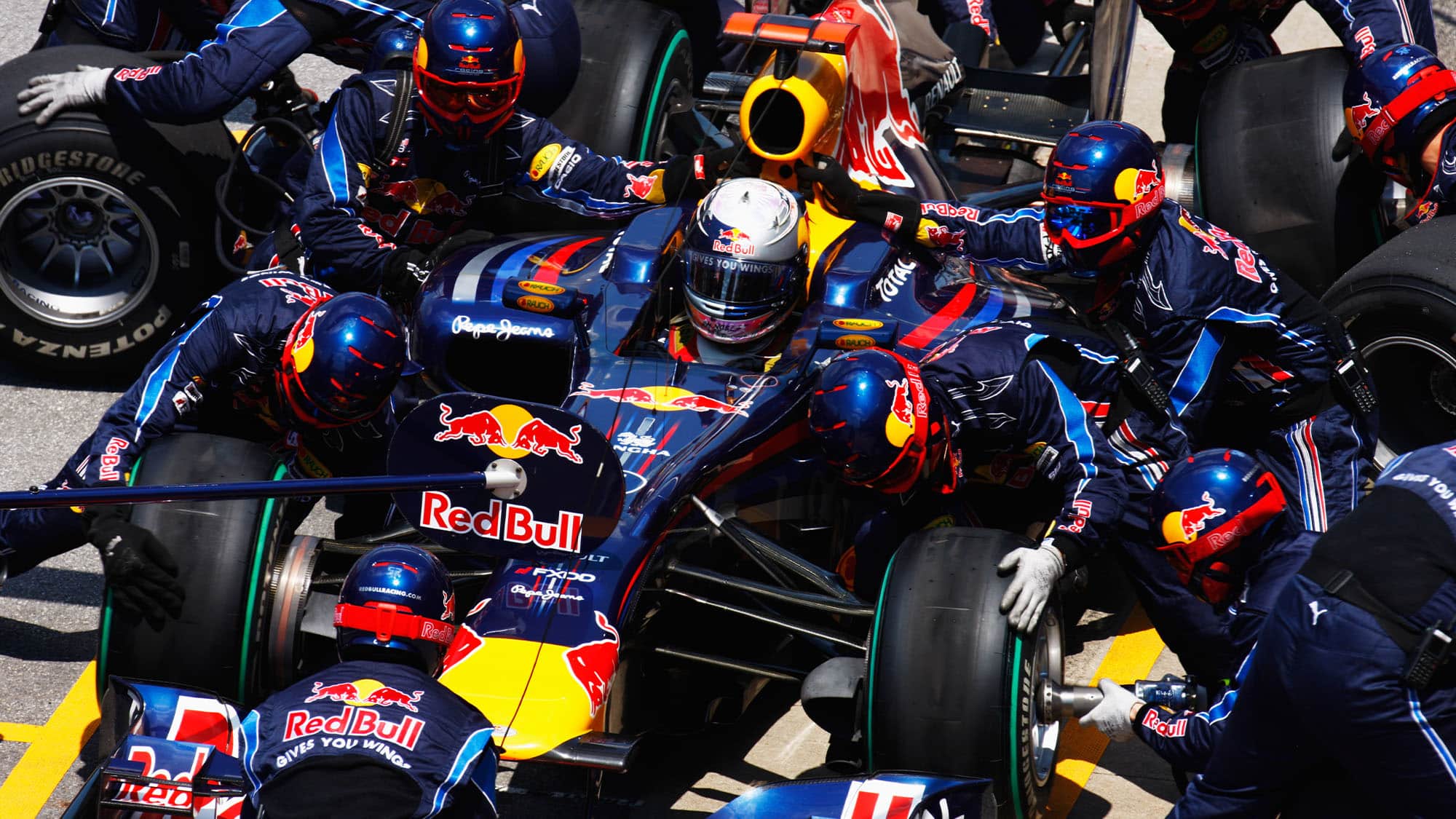
Vettel had to try and win the race on track after being badly stung on tyre strategy
Red Bull
Vettel had not initially quite grasped that he was racing the cars ahead of him for position. “Do I have to overtake Button on track for the win?” he asked. “Yes, Button and the three cars ahead of him,” came the reply. “How the hell has that happened?” raged Sebastian.
Briefly leading now was the Toro Rosso of Sébastien Buemi, but only because it hadn’t stopped yet. As Alonso and Hamilton came to pass him, the Ferrari driver was wrong-footed, enabling Hamilton to pounce, retaking the lead. Hamilton-Alonso-Button ran tight together but they – together with Vettel – were all in for their second stops by lap 28. Putting Webber in the lead. The race was not even half distance and had seen four lead changes.
